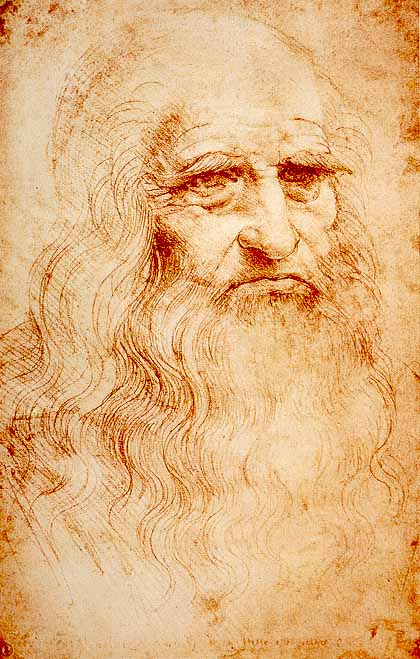
Even this genius, like Dante or Michelangelo (.. and we could list many others), was born in the heart of Tuscany. What does this Earth have that manages to give light to characters of this caliber? Leonardo da Vinci is perhaps the best known character in the entire Italian Renaissance. He was born in a farmhouse in the town of Anchiano which is located 3 km from Vinci in 1452 and died in Amboise in 1519.
His career as an artist began at the age of 17 in Andrea del Verrocchio's Workshop in Florence with drawing and painting. But during his life he shot the courts of Italy also arriving in Provence, becoming an “handyman” artist: painter, sculptor, engineer, musician, scientist from the natural point of view and also technical, architect, literate, inventor. His native home in Vinci is today a Museum, to it also belongs to the Leonardian Museum that makes us know the Master as an engineer and inventor, through its drawings, machinery and models of the latter.
He was a true thinker of the Renaissance, who wanted to understand the world, the nature of light, of movement, the functioning of the human body and was endowed with a fantasy and ability expressive out of the ordinary. Who does not know his drawing called 'Vitruvian Man'? Leonardo carried out the thought of the architect Vitruvius, according to which human proportions are equal to those of nature. By combining geometry, anatomy and optics, he laid the mathematical basis of an artistic representation. So coming to the conclusion that the measure of everything was man and that this model of proportion was the expression of divine harmony. In Vinci, arriving under the walls of the town we have in front of the three-dimensional model of this very famous design. As an environment worthy of this thought Vinci and its typically Tuscan landscape invite to aspire to its beauty and harmony.
The clay color of the dry walls of the terraces and buildings of the historic center, the hills full of vineyards and centuries-old olives that could perhaps even tell the secrets of young Leonardo make us understand where the sharp sense of aesthetics of this unique and fascinating Master had its roots.
This guide has been translated automatically through a third party service. Visititaly offers these automatic translations to help site visitors, however the automatic translations may contain inaccuracies, errors or inaccuracies. You can contact us to report inaccuracies or errors and we will check the translation.